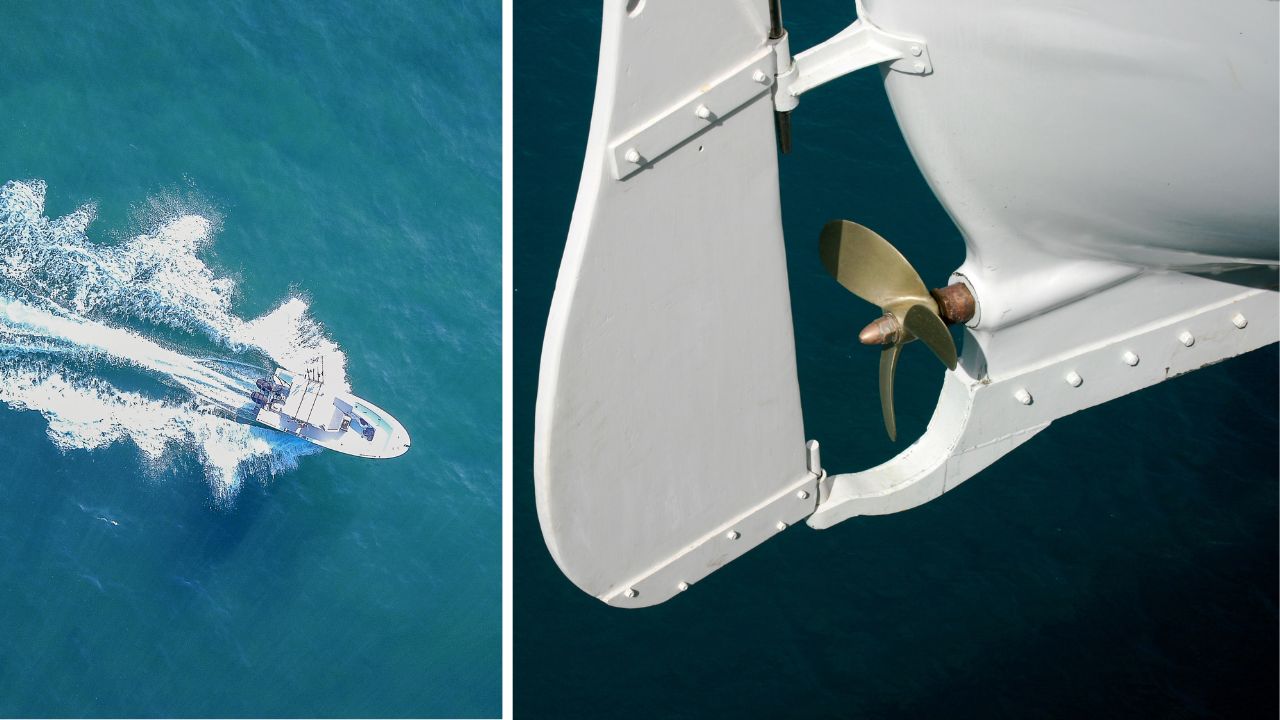By Bill Jennings
When it comes to understanding propeller pitch, it is easy to be confused.
When asked to define propeller pitch, most people respond: “The angle on the prop blade that can change your speed.” This is not the best definition.
Pitch is best defined as “a measurement, that is provided in inches” and is usually shown as the second number in a propeller size.
Let me explain to any boater who may be confused. The inches given to define a propeller pitch, represent the distance in inches that a specific propeller will move a boat forward in the water with every single full rotation.
Since you are a clever boater, I am sure that you are asking how this definition can apply to all different boat sizes – – and you are right to ask.
A heavy boat may require a little more rotation than the stock pitch number indicates, to reach its ideal inches forward speed. The prop pitch in inches forward is therefore theoretical or as if the prop were turning in a solid material.
That extra 5 to 15% added rotation that a prop slips in water is appropriately called “Slip”. So now your definition of Pitch remains the same, but you need to consider that since there is a slip factor that can vary between different boats, the effective pitch of a propeller becomes the distance in inches that a specific propeller will move a boat forward with every single full rotation, minus slip.
The most important thing about pitch, however, is that as you increase those forward inches in travel by increasing the slip or size of bite the prop takes each turn, you are also increasing the work required by the motor to turn the prop.
A prop can only turn a prop with a specific pitch to the point where it has sufficient horsepower.
The two become interrelated. If you have a motor that is designed to produce maximum horsepower at say 6,000 RPM, then you will need a prop pitch that can be physically turned at up to 6,000 RPM.
When you run the motor at full throttle, if the RPMs read less than the rated horsepower, you know you are asking the prop pitch to do more work than you have available horsepower. You need a smaller ‘pitch’ that will reduce work and allow the motor to reach its full potential.
Conversely, if your RPMs read more than what the motor recommends at full throttle, you can pull those RPMs down into the recommended range by increasing the work that the prop is asked to do.
You do that by increasing the prop pitch number.
When full throttle on your boat, delivers the manufacturer’s optimum engine RPMs, you have the correct sized prop.
You now understand not only the correct definition of prop pitch, but why pitch is so important to achieve maximum performance from you boat.
Keyword : boat engine horsepower and pitch, boat propeller pitch guide, boat propeller sizing tips, boating performance tuning, boating tips for beginners, choosing the right prop pitch, correct prop size for boat, full throttle RPM tuning, how prop pitch affects speed, marine engine performance, marine propeller performance, optimizing boat performance, pitch and horsepower explained, pitch vs slip boating, prop slip definition, propeller efficiency tips, propeller pitch adjustment, propeller pitch explained, RPM and prop pitch relationship, understanding propeller slip boat engine horsepower and pitch, boat propeller pitch guide, boat propeller sizing tips, boating performance tuning, boating tips for beginners, choosing the right prop pitch, correct prop size for boat, full throttle RPM tuning, how prop pitch affects speed, marine engine performance, marine propeller performance, optimizing boat performance, pitch and horsepower explained, pitch vs slip boating, prop slip definition, propeller efficiency tips, propeller pitch adjustment, propeller pitch explained, RPM and prop pitch relationship, understanding propeller slip
